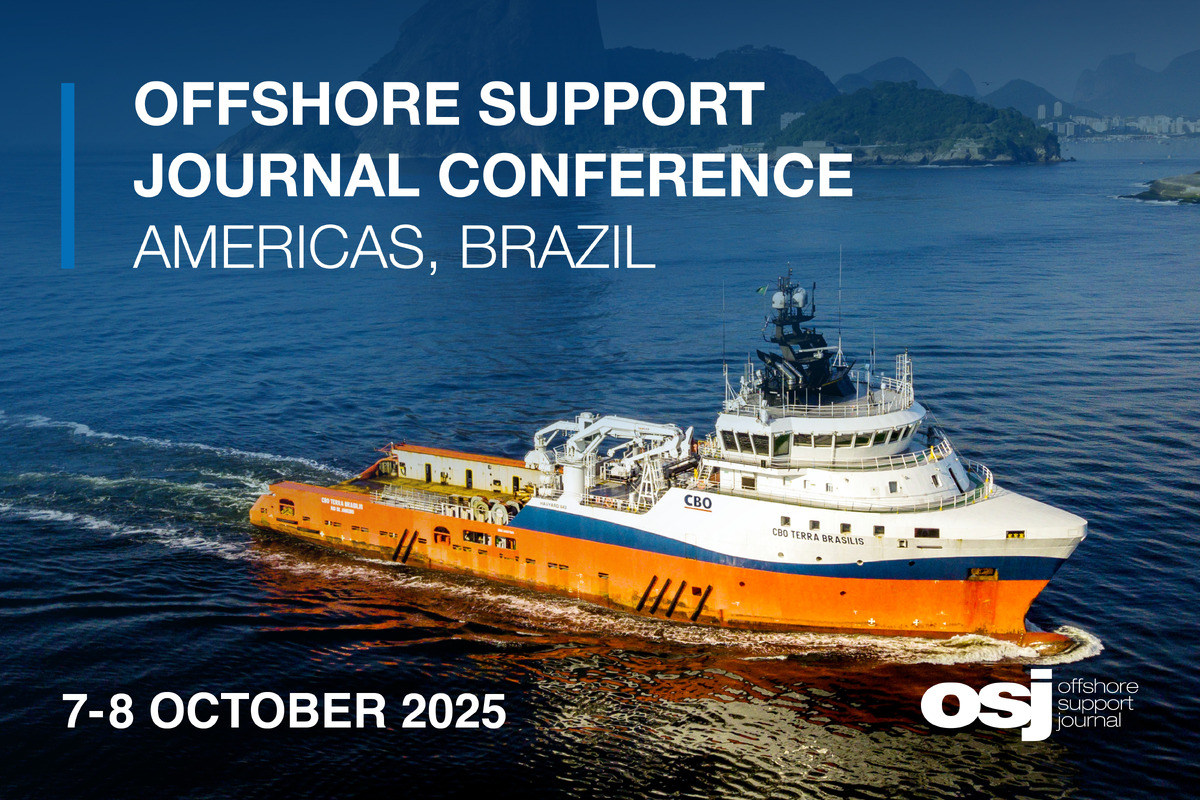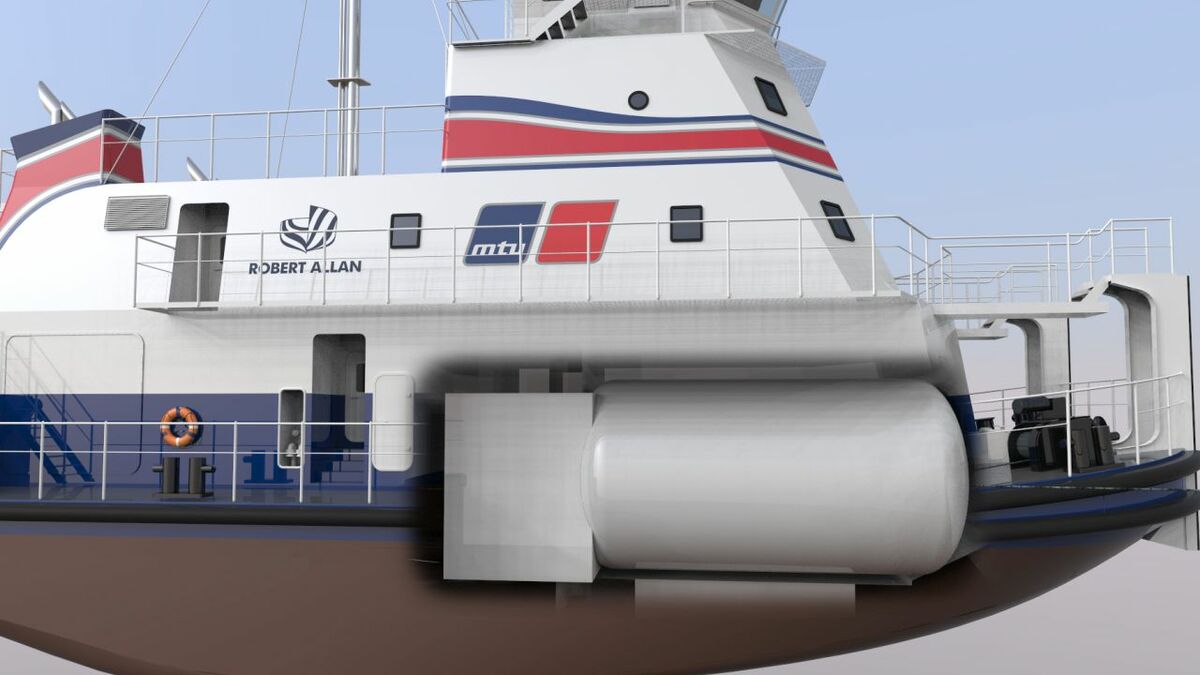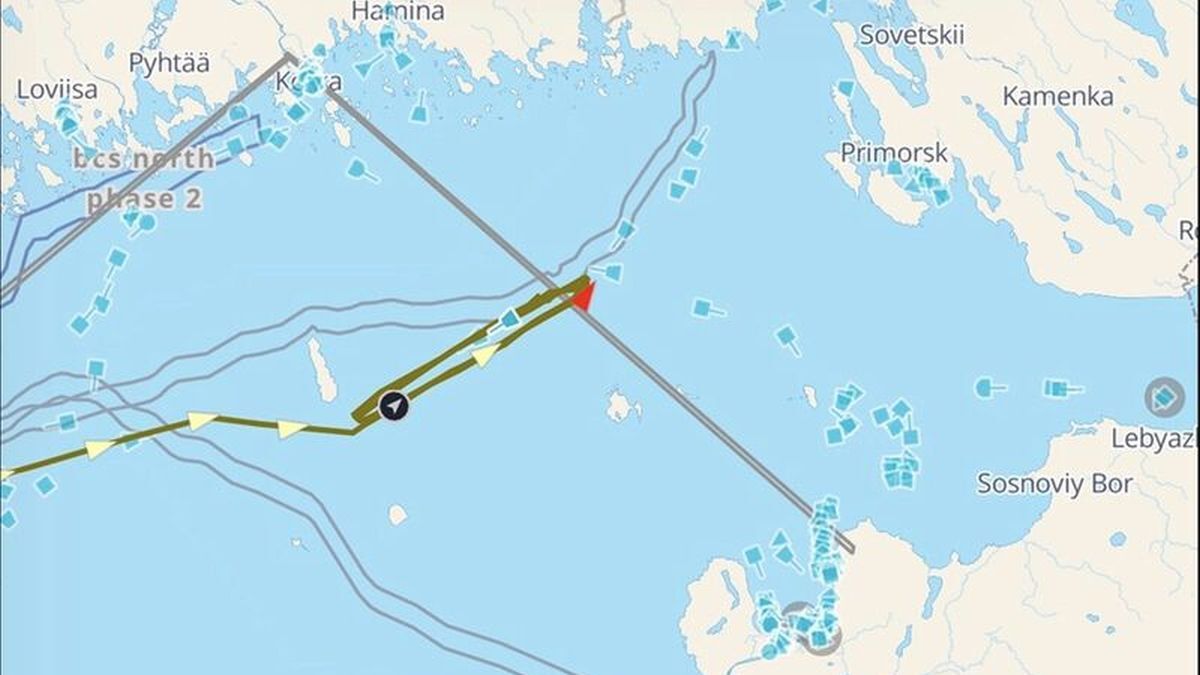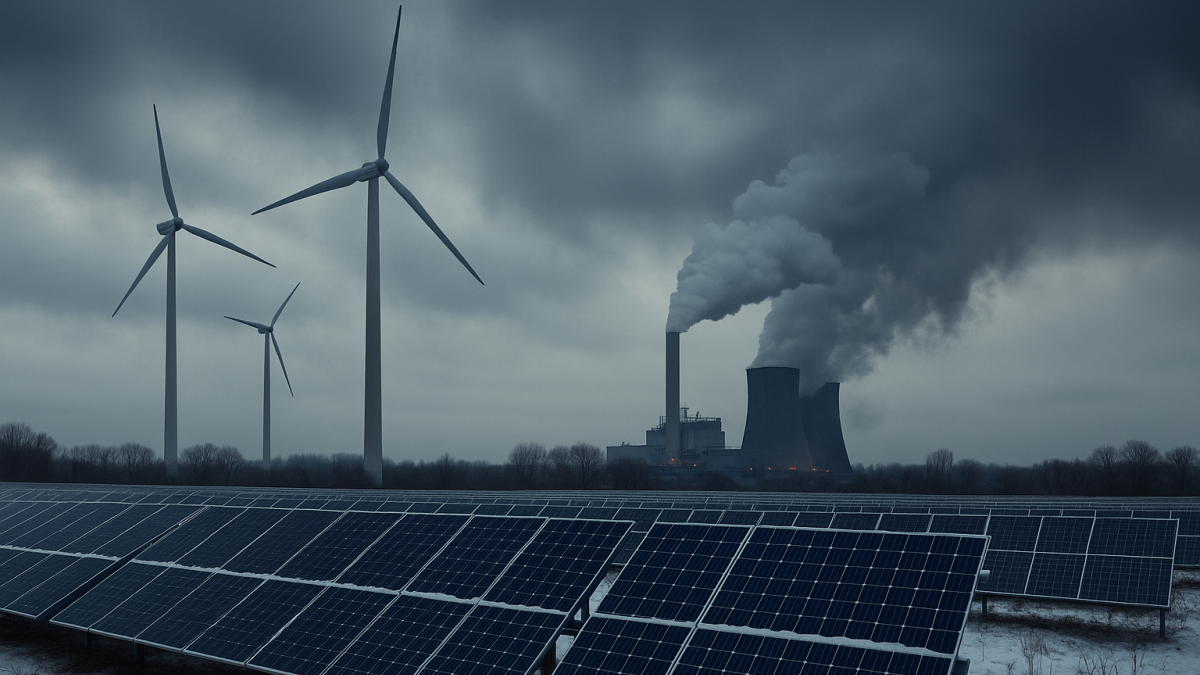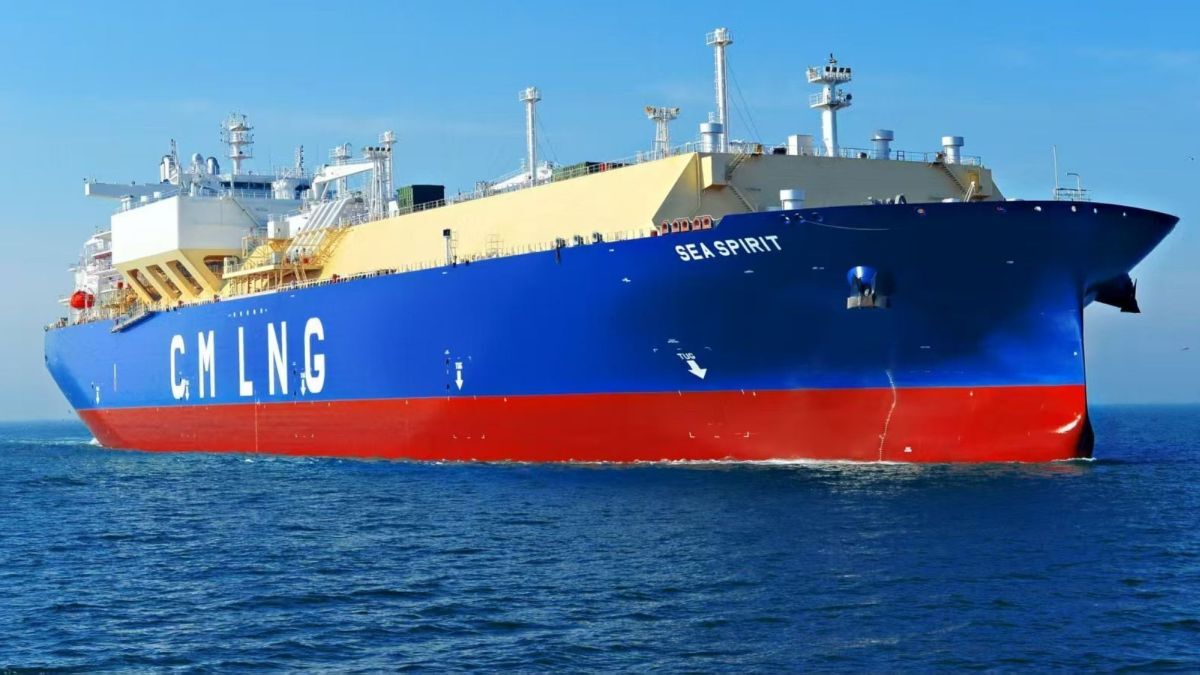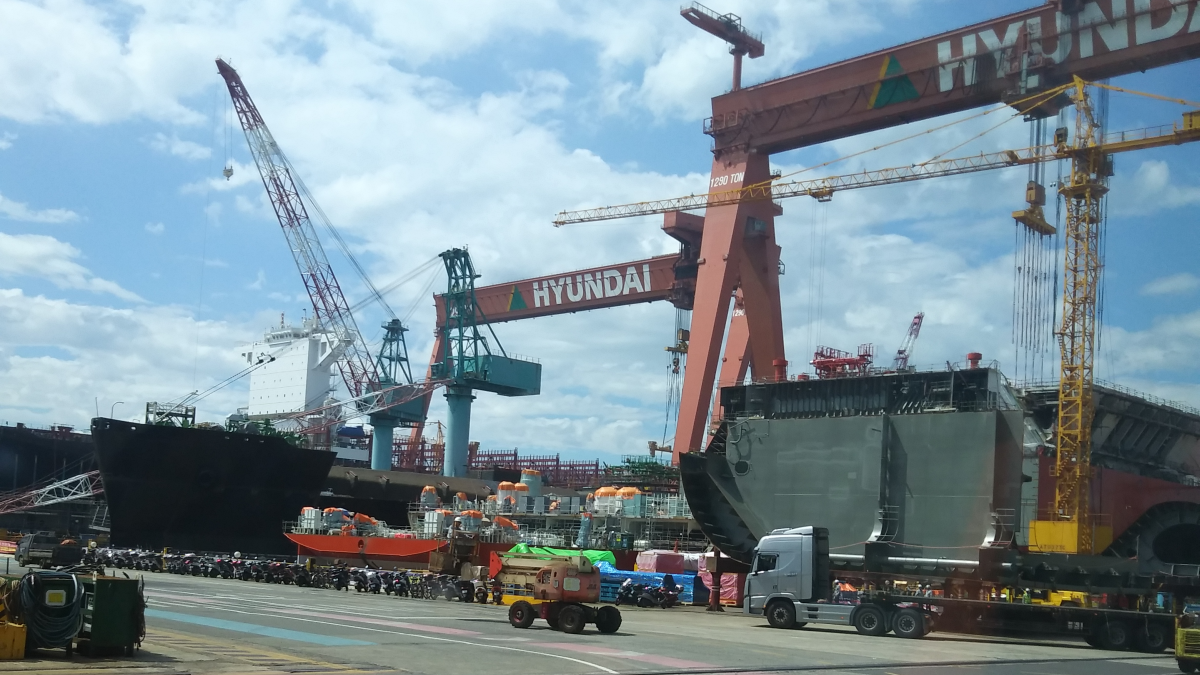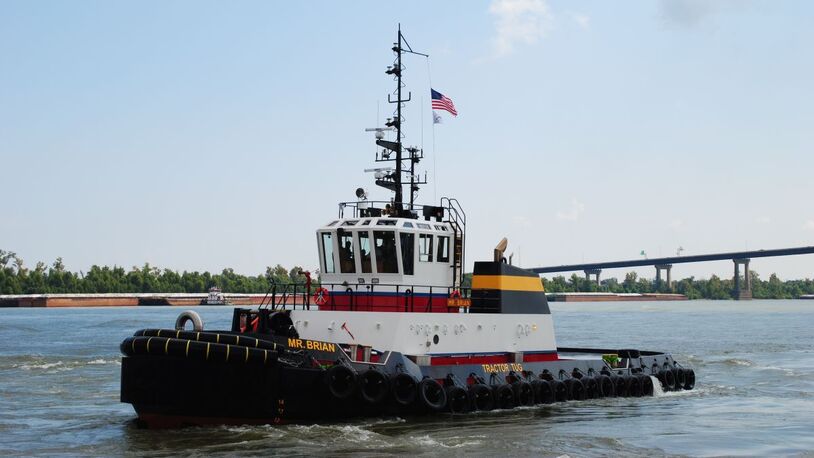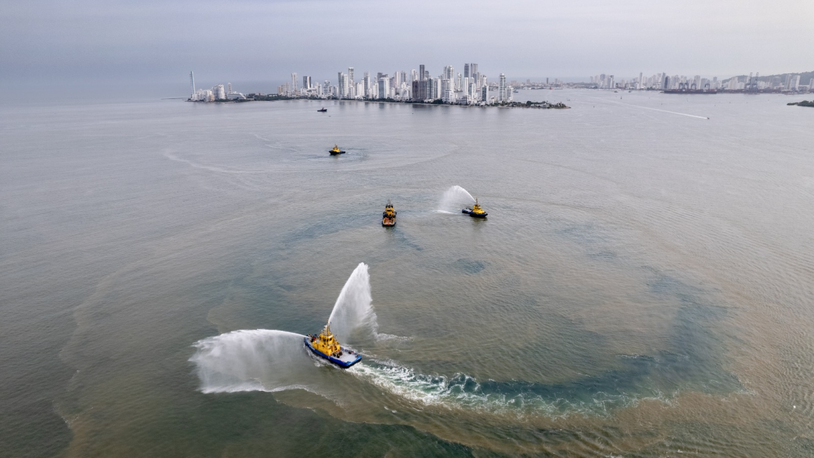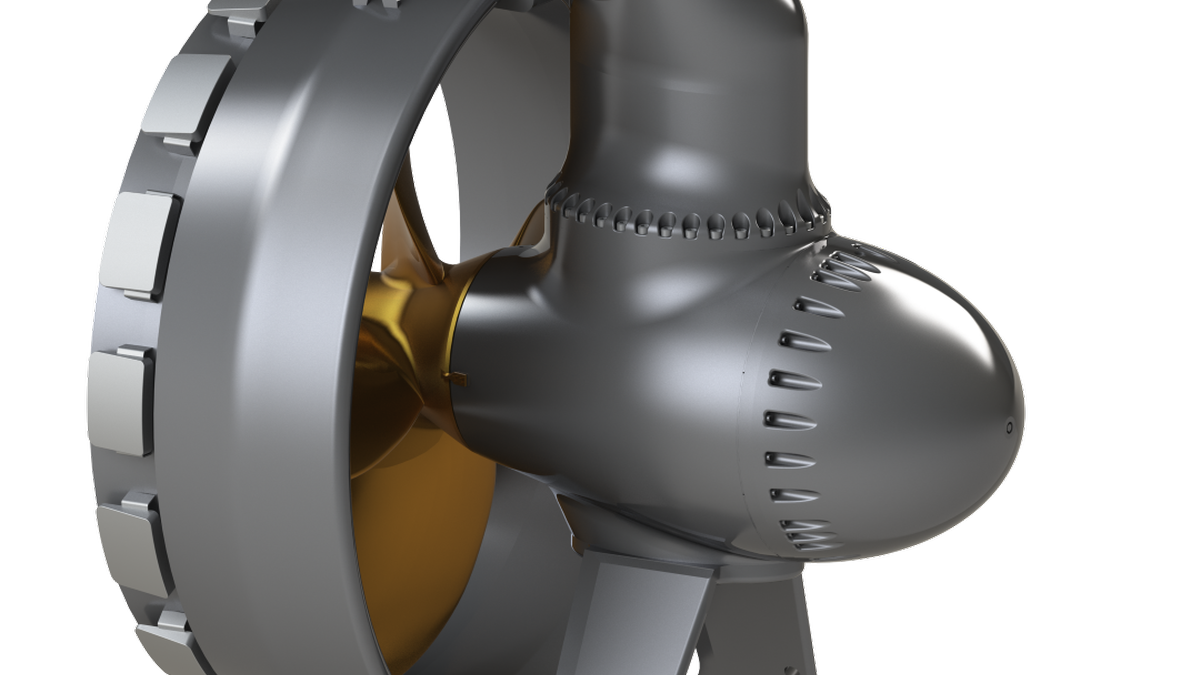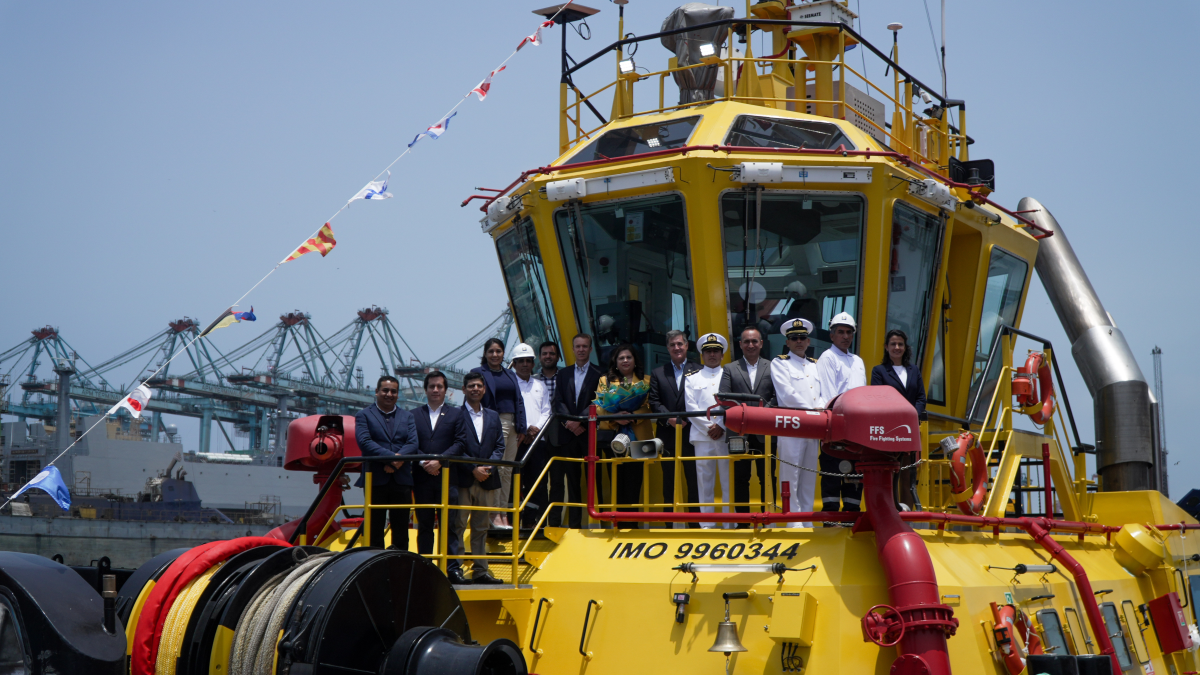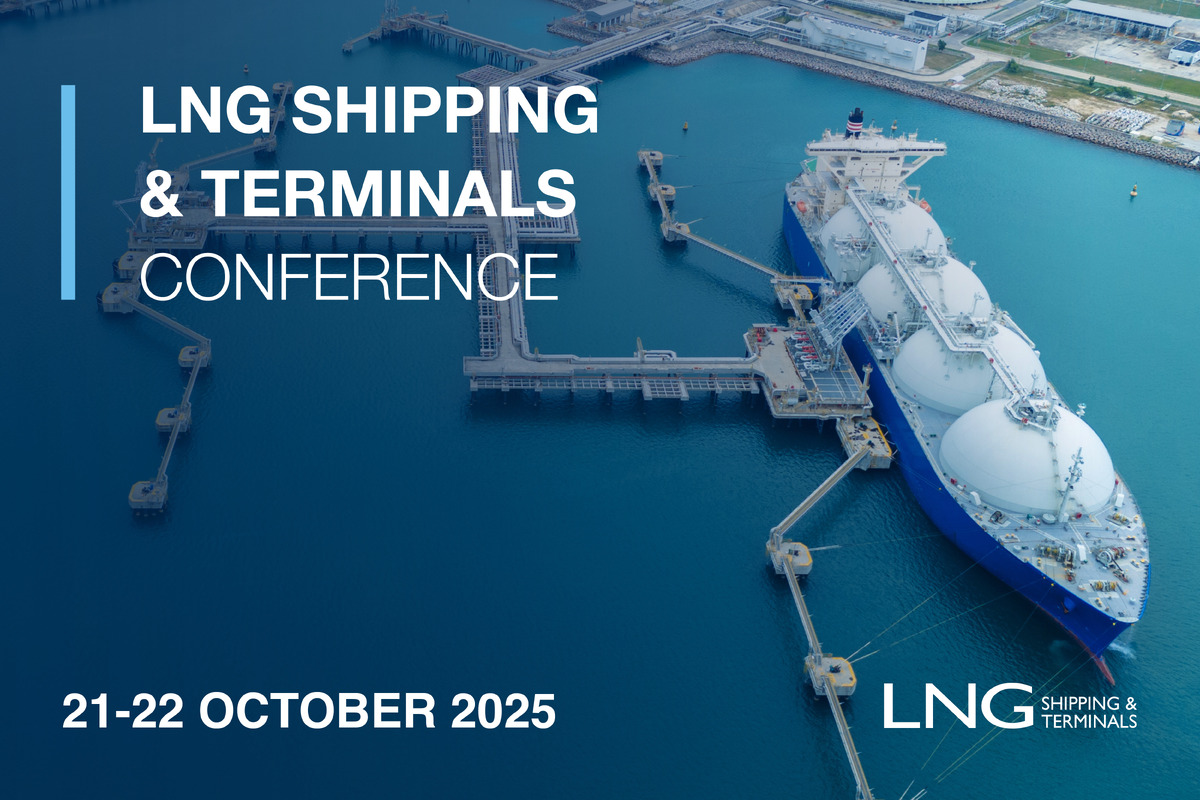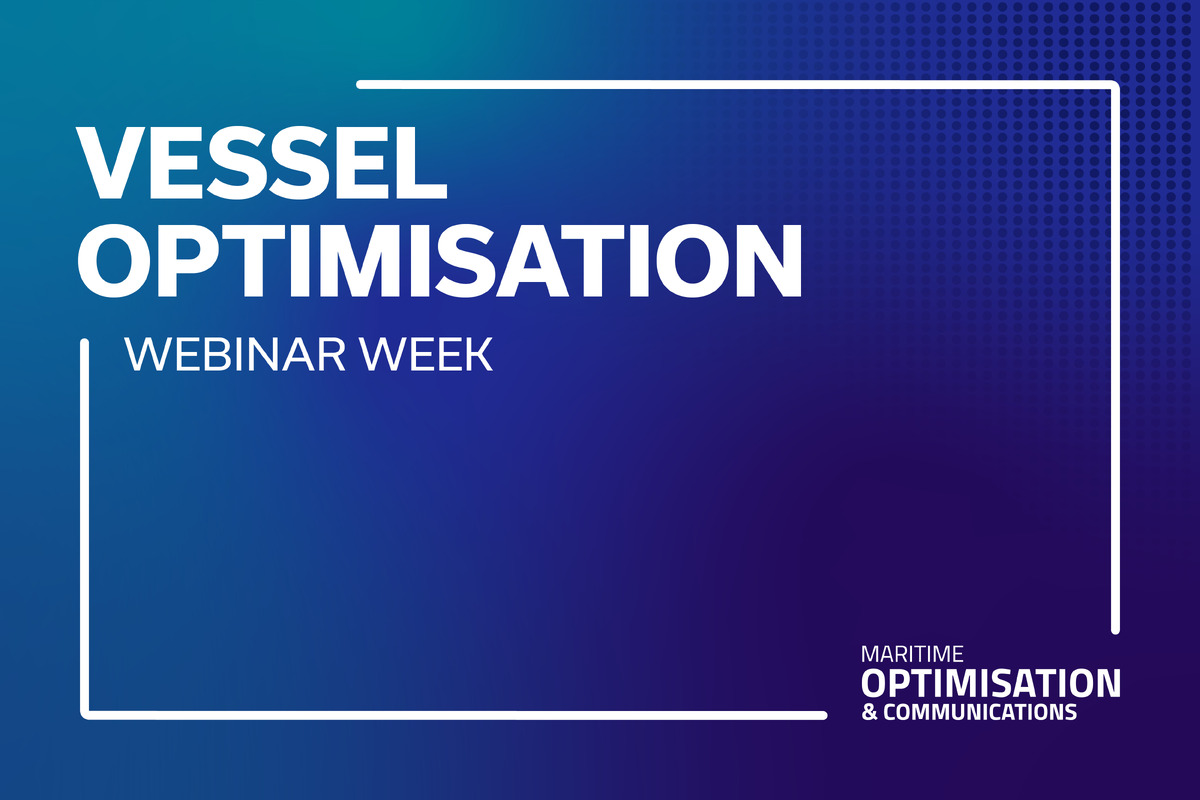Business Sectors
Events
Contents
Gas, hybrid and electric coming to tug propulsion
Gas-powered engines and hybrid propulsion ensure harbour tugs exceed IMO Tier III and US EPA Tier 4 emissions compliance
Manufacturers have stepped up to the challenge of developing dual-fuel engines and hybrid propulsion for tugs and workboats. Their endeavours enable shipyards to install more of these engineroom systems to reduce emissions on new tugboats and comply with IMO emissions reduction requirements. In their regional markets, these tugs will exceed compliance with national regulations, such as the US Environmental Protection Agency (EPA)’s Tier 4. This calls for minimal sulphur and nitrogen oxide (SOx and NOx) emissions.
Rolls-Royce Power Systems has developed gas-fuelled engines and genset products for harbour, inland and escort tugs. Its main product is a 16-cylinder pure gas engine, based on MTU’s proven 16V 4000 M63 diesel engine for workboats. This gas engine has a power output of 1,492 kW.
An 8-cylinder version with an output of 746 kW will be developed later in 2020. Both are suited to tugboats, ferries, push-boats and special purpose vessels. “The dynamic acceleration behaviour and the possibility to install direct mechanical propulsion systems with fixed propellers are very suitable for tugs,” says Rolls-Royce Power Systems commercial marine applications engineer Cyrill Halbauer.
Both engines exceed compliance with IMO Tier III and US EPA Tier 4 with no SOx emissions, very low NOx and particulate mass below the verification limit.
Mr Halbauer says pure gas engines were developed instead of a dual-fuel version as this would have higher complexity, “since two different types of fuel need to be taken into account”. Further, “dual-fuel engines tend to be heavier and therefore have a higher impact on the weight of the propulsion system,” he explains to Tug Technology & Business.
An LNG propulsion system includes storage tanks and a tank connection space which prepares the fuel for the engine, a gas regulation unit where the gas pressure will be adjusted to the engine, and a double block and bleed unit, where surplus gas will be led away by a mast and monitoring sensors.
Gaining experience
One of the first applications for MTU gas engines could be on push-boats operating on the Amazon River in Brazil. This follows a request to naval architects Robert Allan to design a gas-fuelled vessel based on its proven RApide 2800-Z2 design.
This is a shallow water push-boat powered by LNG with a pair of 8-cylinder MTU gas 4000M55RN engines, each producing 746 kW of power. Rolls-Royce would provide the whole LNG supply system and gas controls for vessels built to this design, which was approved in principle by DNV GL for use on inland waterways.
LNG engines on these vessels would produce no particulates and emit significantly less NOx.
Rolls-Royce will also supply gas-electric propulsion systems, based on four medium-speed Bergen B36:45L6AG engines, to two new multi-purpose vessels under construction in Germany. Shipyard Abeking & Rasmussen is building these vessels for Germany’s Federal Waterway and Shipping Administration. Gas-powered Bergen engines will deliver combined power of 3,600 kW, giving these vessels a top speed of 15 knots and 145 tonnes of bollard pull for emergency towage.
Rolls-Royce will provide gas protection systems developed to allow the engines to remain safely operational in circumstances where, for example, the ambient air has been contaminated with explosive gases following a gas tanker accident.
Rolls-Royce project manager Christian Prinz says safety measures will prevent engine issues. “If gas gets into the combustion chamber in an uncontrolled way via the intake air, the engine [could] become unmanageable,” he explains.
To overcome this, the engine power output is adjusted in relation to the amount of gas in the intake air. The more gas there is in the intake, the less gas fuel is fed to the engine via the gas control valves. If the gas volume becomes too high, quick-response flaps shut off the intake of gas and air and the engine comes to a stop.
Hybrid series imminent
Rolls-Royce Power Systems is also developing hybrid propulsion systems for workboats, patrol boats, ferries and yachts with a power range of 1,000-4,000 kW.
This will combine diesel engines with electric motors and batteries for a variety of marine applications which will be efficient, environmentally friendly, flexible propulsion systems.
“For tugboats, the hybrid propulsion system offers the possibility of being able to manoeuvre very precisely using the electric motor,” says Mr Halbauer, “or to deliver a powerful bollard pull using the entire power output of the diesel engines and electric motors combined.”
These will be integrated with MTU Series 2000 and 4000 engines. Complete hybrid propulsion systems will have electric drive modules, transmission systems, batteries, monitoring and control systems and other electronic components. Hybrid systems will be customised to vessel and owner requirements.
Systems incorporating MTU Series 2000 engines combined with variable electrical power, will be launched later this year to cover 1,000-2,200 kW per power train. Step-by-step, Rolls-Royce Power Systems will extend its portfolio with hybrid systems with MTU Series 4000 engines and variable electrical power to cover power ranges up to 4,000 kW per powertrain.
“In the first instance, MTU will focus on power take-in (PTI) solutions and gradually introduce inline solutions,” says Mr Halbauer. With the PTI solution, the gearbox is connected to the diesel engine via a clutch. To this PTI gearbox, an electric motor is attached which can be coupled or decoupled as needed.
The MTU inline solution consists of an intermediate shaft gearbox that is flanged between the diesel engine and the transmission gear unit. At this intermediate shaft gearbox, electric motors (1-4, depending on customer and performance requirements) are directly attached.
Great Lakes tugs
Great Lakes Towing is deploying hybrid propulsion on new tugs it is building at its own shipyard for environmental emissions compliance and lower fuel costs.
Canal Marine & Industrial is assisting in installing hybrid propulsion on these tugs. Its chief technology officer Chris Wright tells TTB these hybrid systems have improved operations and saved Great Lakes Towing money.
“The hybrid systems we are currently implementing on Great Lakes Towing newbuilds allow the main engines to be clutched out and shut down for low-level motorised propulsion, which then utilises relatively small and optimally-loaded diesel gensets” he explains.
“It is becoming a fairly well-established technique for improving fuel consumption, reducing emissions and reducing maintenance costs,” Mr Wright says.
These significant and measurable benefits are verified during sea trials and bollard pull tests after the tugs are completed and before official delivery.
Motors can also augment Great Lakes’ tugs propulsion with more power when required for challenging towage operations.
“The system also allows for a boost to bollard pull at the top end by running the diesel gensets and making an additional torque contribution to the propulsion shafts through the motors, to support the main engines,” says Mr Wright.
Great Lakes is building a series of five harbour tugs to Damen 1907 ICE design with two MTU 8V4000 diesel engines, complying with EPA Tier 3 requirements. These have Logan FlexaDrive hybrid power systems, allowing them to operate on electric power while underway at low speeds, idle or under low loads without using the main engines. The fourth of these tugs, Pennsylvania, was completed in Q4 2019 and the fifth is due for delivery in Q2 2020.
Hydraulic hybrid
Caterpillar took a different approach in developing hybrid propulsion, as it worked with Sanmar on a hydro-mechanical system for tugs built in Turkey. These systems come with CAT Advanced Variable Drive (AVD), two Cat 3512 main engines and two 435-kW hydraulic motors, powered by a single CAT C32 auxiliary engine, rated 1,081 kW at 2,100 rpm. A Cat 3512 engine develops 1,765 kW of power at 1,800 rpm.
All this power is integrated and delivered to a pair of CAT MTA 627 Z-drive units, with 2.7-m diameter fixed pitch propellers. These generate up to 70 tonnes of bollard pull to a harbour tug. The first of these systems was incorporated in Boğaçay XXXVIII that Sanmar built to a RAmparts 2400-SX design and ABS class.
CAT AVD consists of a pair of dual-input and continuously variable transmissions, located in the shaft-lines between the main engines and the Z-drives. They can modulate propeller speed down to zero revolutions, similar to a slipping clutch.
They can also spin the propeller faster than if the engine was directly coupled to the drive. This enables engines to operate in their peak efficiency zone instead of operating along the propeller demand curve at higher specific fuel oil consumption, reducing fuel costs.
There are four operating modes: Mode 1 is transit, covering 78% of tug operating time. In this mode, the auxiliary engine is transmitting power through the AVD to the Z-drives
Mode 2 covers 19% of the tug’s work time, with main engines and auxiliary on and loads variably controlled by power demand. Mode 3 is a boost for maximum bollard pull with both main and auxiliary engines at full power.
IMO Tier III compliance
MAN Energy Solutions’ hybrid tug propulsion is based on using its 12-cylinder 175D diesel engines with selective catalytic reduction (SCR) power, electric motors and variable speed drives.
This can be integrated with azimuthal thrusters to produce up to 80 tonnes of bollard pull with a power rating up to 2.5 MW per propeller, based on the MAN 12V 175D engines and can reduce fuel oil consumption and CO2 emissions by up to 27%.
MAN has worked with Robert Allan to design an IMO Tier III-compliant escort and harbour tug based around a pair of MAN 175D engines and SCR. MAN includes auxiliary gensets, variable speed drives, electric motors, batteries and a drive control system. An integrated hybrid would also have thrusters optimised for engine-battery output.
With this full setup, a hybrid tug optimises engine operation and loading, resulting in higher efficiency and reduced fuel consumption, exhaust emissions and noise.
By including batteries, MAN can reduce the size of engine required to 12-cylinder engines instead of 16-cylinder units. The batteries also increase dynamic system response through faster propulsion power reaction.
Combustion engines can run for longer with high and constant loading, reducing their operating hours and extending engine life.
MAN can supply gearboxes and propulsion control systems, AC and DC switchboards for medium and low voltage applications and power management systems. It can also supply advanced generator and electric system control and protection, batteries, energy management systems and alarm and monitoring systems.
MAN worked with Robert Allan to design a RAstar 3000H tug with hybrid propulsion for a 30-m long tug with 80 tonnes of bollard pull.
Robert Allan also worked with Cummins on RAstar 3300 design tugs, built for Ghana Ports and Harbour Authority (GPHA). Three tugs were built by TOR Group of companies’ shipyard in Tuzla Bay, Turkey. Ben Owusu-Mensah joined sister tugs Josephine Asante and Commander KT Dovlo, delivered in 2019.
Each vessel has two Cummins QSK95 engines, the first application of these diesel engines on tugs. Each engine delivers 2,685 kW of power at 1,700 rpm to drive Kongsberg US2555 P30 azimuth thrusters with fixed pitch propellers delivering speeds of up to 13 knots and bollard pull of 80 tonnes.
GPHA commander Stephen Abane Ayeo says these Cummins engines are “durable, economical and strong, and provide good maintenance support”.
Each tug also has a pair of Cummins QSB7-powered generators producing 170 kVA, 136 kWe at 1,500 rpm and 50 Hz, provide electrical power to the tugs and a QSK38 1,190 kW variable speed generator to power a dedicated fire pump engine.
Wärtsilä’s latest hybrid propulsion tug project was Vilja, built by Gondan Shipyard for Port of Luleå, Sweden. This ice-breaking escort tug has up to 100 tonnes of bollard pull and can break 1 m ice at 3 knots. It was built to TundRA 3600-H design, certified by Lloyd’s Register and exceeds Finnish-Swedish ice-class rules.
Vilja, delivered in Q3 2019, is equipped with an innovative Wärtsilä’s HYTug hybrid power system that includes two Wärtsilä 26 diesel main engines, shaft generators/motors and batteries for energy storage.
Jurong Marine set to operate Asia’s first LNG hybrid tug
Sembcorp Marine is building the first LNG hybrid tug built and operated in southern Asia for Q4 2020 delivery. This harbour tug will be built with gas-powered engines, LNG handling systems and batteries for reduced emissions.
Jurong Marine Services, a subsidiary of Sembcorp Marine, will operate this tug with ABB’s electric propulsion, power, energy storage, control and automation technology. This will be the first tug application of ABB’s Onboard DC Grid power and distribution system.
ABB will also supply 904 kWh of battery power for zero-emissions operations, peak shaving and onboard electricity.
Onboard DC Grid manages the fast-changing load capabilities demanded by tugs enabling gas engines to run at variable speeds for optimised LNG fuel economy at each load level.
Integrating energy storage means the batteries will be able to provide power to the tug’s propulsion system almost instantaneously.
ABB’s scope of supply also includes the direct current drives for the power take-in and take-off variable speed shaft generator, which integrates with the energy storage battery.
Fully electric tugs built for zero emissions
Ports of Auckland in New Zealand has ordered a fully electric tug as part of its intention to conduct emissions-free operations by 2040.
Damen Shipyards secured the order in March for an electric tug based on its reverse stern drive (RSD) 2513 design.
This tug will have 70 tonnes of bollard pull from a 2,800-kWh energy rated battery pack linked to two Kongsberg US255 L azimuth thrusters with permanent magnet electric motors and fixed pitch propellers.
In Turkey, Navtek Naval Technologies battery-powered harbour tug ZeeTug completed sea trials in December 2019. This was built by Tuzla Shipyard in Turkey to a Navtek NV-712 design and with Corvus Energy-supplied batteries. These are 1,500 kWh energy rated and provide this tug with 31 tonnes of bollard pull. ZeeTug has a fire-fighting system with one monitor for emergency response.
Tuzla Shipyard says it takes less than 90 minutes to fully charge the batteries and this is enough for a full day of standard operations. This tug has an overall length of 18.7 m, which is smaller than similar designed tugs of 21 m.
The shipyard says operational costs of ZeeTug are about 15% less that a similar tugboat driven by diesel engines.
In Japan, Tokyo Kisen Co and e5 Lab Inc are jointly developing a fully electric harbour tugboat powered by batteries and hydrogen fuel cells.
They intend to install an e5 powertrain on e5 Tug. This uses a large-capacity battery system as a main power source, with a hydrogen fuel cell and generator for auxiliary power. This will all drive two 1,500 kW azimuthal thrusters.
Tokyo Kisen plans to operate this tug in Yokohama and Kawasaki port areas from 2022.
Related to this Story
Events
Offshore Support Journal Conference, Americas 2025
LNG Shipping & Terminals Conference 2025
Vessel Optimisation Webinar Week
© 2024 Riviera Maritime Media Ltd.
